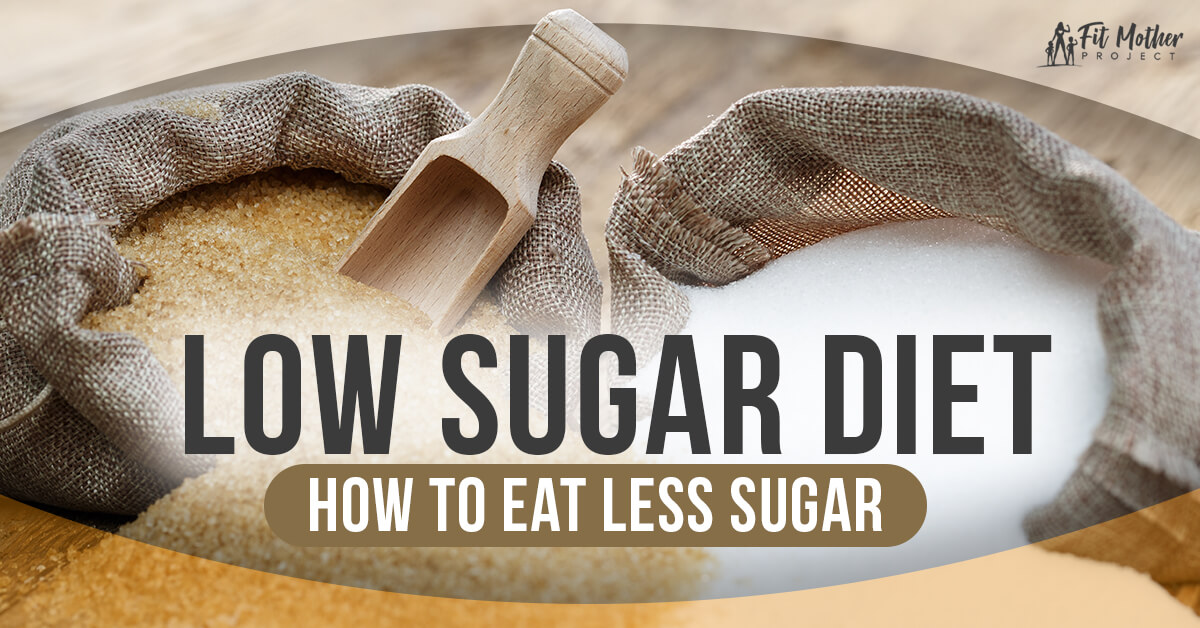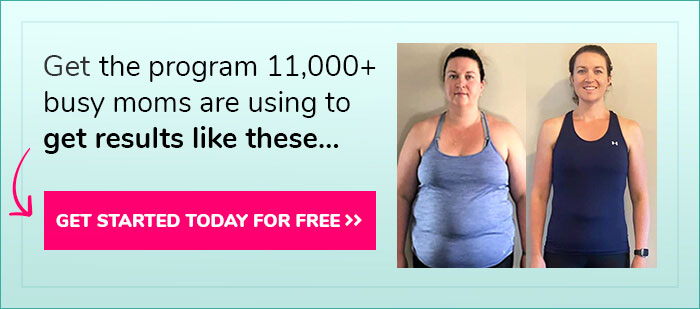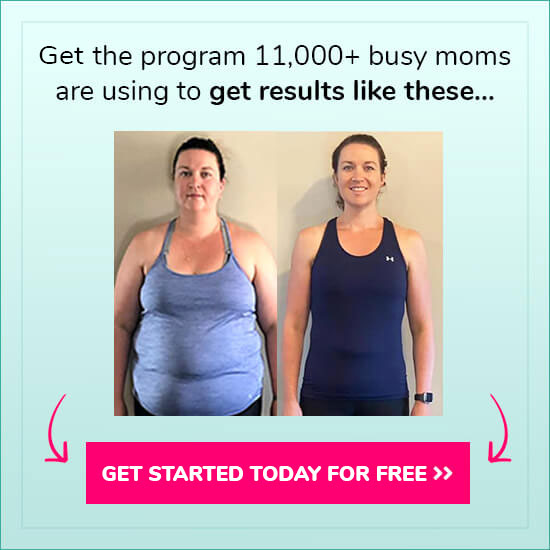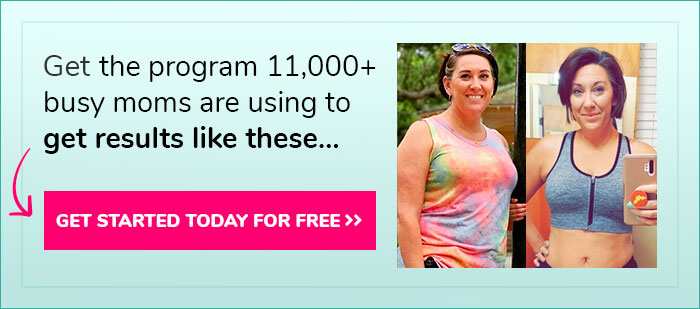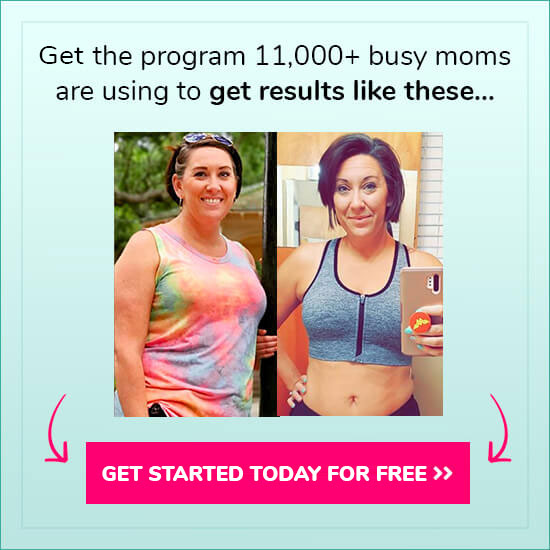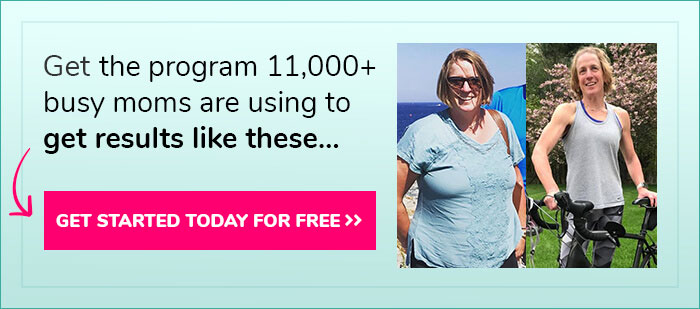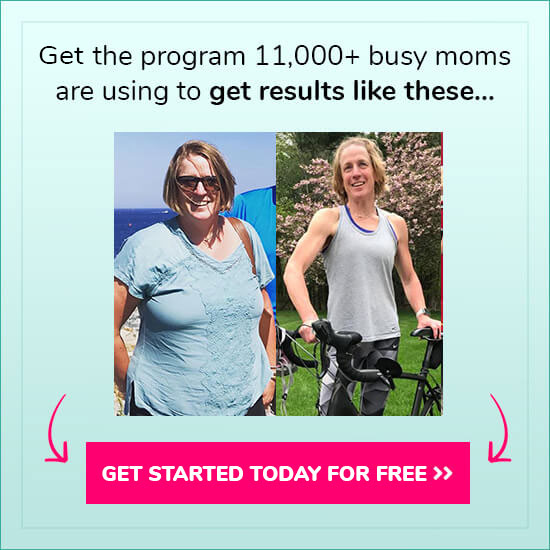You know that sweets and drinks containing added sugar aren't the healthiest options, but you may be wondering how to adopt a low-sugar diet without feeling deprived.
If you're used to eating a lot of added sugar, don't be too hard on yourself if you struggle to follow a low-sugar diet the first time you try.
As with other addictive substances, it may take several tries before you achieve success.
Make simple changes until you reach a goal of 24 grams (or less) of added sugar per day.
If you're following a lower-calorie diet, you may want to limit added sugar intake even more.
While eliminating added sugar entirely is difficult, keep your intake low as you can and if you have a cheat day every now and then, it's OK!
Achieving a low-sugar diet is entirely possible with the right knowledge, mindset, and healthy eating strategies in place.
Small diet changes can produce dramatic results in many cases.
Keep reading for some simple tips and tricks to cut back on added sugar and have the energy needed to feel great throughout the day!
Check out these 20 nutrient-dense foods you should add to your diet!
Burn RX is for women who are working on losing weight and want to see faster and easier results from their eating & exercise efforts. It helps your body burn more fat before, during, and after your workouts, which will improve your body composition while boosting your energy + metabolism.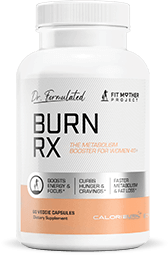
![]()
Meet Burn RX. The Safe & Effective Metabolism Booster To Help You See Faster Results

What is Sugar?
Sugar is a type of simple carbohydrate that gives your body energy.
There are different types of sugars, and not all of them are bad for you.
Natural sugars are present in whole foods and are considered “good” sugars because they're helpful for sustaining energy and meeting your body's daily nutritional needs.
Added sugars are the sugars you want to avoid, or limit as much as possible, to maintain exceptional health and wellness.
Unfortunately, added sugar is present in 74% of packaged foods and lurks in many unsuspecting foods.
The reason added sugar isn't a good choice is that it adds calories to your menu but few, if any, essential nutrients.
It can contribute to weight gain and a higher risk of diabetes and other chronic diseases.
Furthermore, added sugar has addictive properties. If you're used to eating a lot of it, cutting back can be difficult.
What Are Common Forms of Added Sugar?
When checking food labels for added sugar, you might not see the words “sugar” listed on the ingredient list.
That's because added sugar comes in a variety of forms and has many different names.
Examples of added sugars to watch out for include:
- Agave nectar
- Barley malt
- Barley malt syrup
- Beet sugar
- Brown sugar
- Cane juice
- Cane sugar
- Caramel
- Coconut sugar
- Confectioner's sugar
- Corn sweetener
- Corn syrup
- Date sugar
- Dextrin
- Dextrose
- High-fructose corn syrup
- Honey
- Malt syrup
- Maltodextrin
- Maltol
- Maltose
- Maple syrup
- Molasses
- Muscovado
- Palm sugar
- Powdered sugar
- Rice syrup
- Saccharose
- Granulated sugar
- Sweet sorghum
- Syrup
Beware of these and other added sugars present in many packaged foods when you're trying to adopt a low-sugar diet for better health.
Which Foods Contain Sugar?
Common foods that contain natural or added sugar include:
Natural Sugars
Natural sugars are present in the following nutritious foods:
- Fruits
- Vegetables
- Milk, yogurt, and other dairy foods
- Some whole grains
These healthy whole foods are rich in fiber or protein, vitamins, and minerals.
Include them in your diet in recommended amounts to stay healthy and reduce your risk of chronic diseases.
Added Sugars
Added sugars provide your body with calories but few essential nutrients.
While added sugar gives you a quick boost of energy, the energy doesn't usually last very long.
Many processed foods and drinks contain added sugar. Examples include:
- Sugar-sweetened drinks
- Baked goods
- Many condiments
- Sweet treats
- Many packaged foods
Consuming too much added sugar can make you feel sluggish and may contribute to weight gain and nutritional deficiencies.
That's why limiting foods containing added sugar in favor of whole foods with natural sugar is your best bet!
What Are the Benefits of Limiting Added Sugar?
If you eat more added sugar than what's recommended, reducing your intake of processed sugar can offer the following health benefits:
- Lower risk of weight gain
- Healthy weight management
- Reduced obesity
- Less tooth decay
- Lower blood sugar
- Reduced risk of diabetes
- Lower triglycerides
- Reduced cholesterol
- Lower risk of heart disease
- Longer-lasting energy
Reducing added sugar intake in favor of natural sugar can help you look and feel your best at every age.
It allows you to set a good example for your spouse and children too!
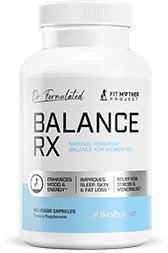
![]()
The Natural Hormone Balancer Busy Women 40+ Are Using For Improved Mood, Sleep, Skin, Stress & Easier Weight Loss

How Much Added Sugar is Too Much?
While avoiding added sugar altogether is best, that's usually not possible (or necessary).
Hidden sugars lurk in many unsuspecting foods, so reducing your intake to recommended amounts is optimal.
The American Heart Association recommends limiting added sugar to no more than 100 calories per day (24 grams) for women and no more than 150 calories daily (36 grams) for men.
However, less is better, so choose foods without added sugar or foods and drinks containing 3 grams of added sugar (or less) per serving.
Check the nutrition facts label on all of your favorite packaged foods and beverages!
Learn how to reduce sugar addiction and recognize sugar addiction symptoms!
Ways to Follow a Low-Sugar Diet
Several helpful tips help you and your family eat less added sugar to improve overall health and wellness, sustain long-lasting energy, and look and feel your best!
Examples include:
Know Which Foods Contain Added Sugar
Knowing which types of foods and drinks contain added sugar is a good way to limit your intake.
Examples of frequently consumed items that have added sugar in them include:
- Flavored yogurts
- Sugar-sweetened kefir
- Regular chocolate milk
- Sugar-sweetened plant milk
- Sodas, lemonade, juice drink blends, and other sugar-sweetened drinks
- Many sports drinks
- Vitamin water
- Sweet tea
- Sugar-sweetened coffee drinks
- Barbecue sauce
- Ketchup
- Spaghetti sauce
- Many types of salad dressings
- Granola
- Candy
- Cake
- Ice cream
- Cookies
- Other sweet treats
- Many protein bars
- Many ready to drink protein shakes or smoothies
- Granola bars
- Packaged soups
- Sugar-sweetened breakfast cereals
- Sugar-sweetened cereal bars
- Canned fruit packed in syrup
- Canned baked beans
When in doubt about the added sugar content of your favorite foods and drinks, read the nutrition facts label.
Look at grams of added sugar in addition to the amount of total sugar each product contains.
Learn how to read nutrition information on another level!
Choose Nutrient-Dense Drinks Over Sugary Drinks
When it comes to choosing beverages, pick water as often as you can.
Choose drinks that are nutrient-dense, meaning they're free from added sugar but provide protein, vitamins, minerals, or other essential nutrients your body needs daily.
Examples of healthy drinks to pick in place of sugary alternatives include:
- Water
- Water flavored with 100% fruit juice
- Water flavored with mint, cucumber, or fruit chunks
- 100% fruit juice
- Carbonated water
- Milk
- Unsweetened plant milk
- Plain kefir
- Low-sugar protein shakes
You can make healthy protein shakes at home using nutrient-dense protein powder, water or milk, ice, and fruit or nut butter (optional).
Or you can choose low-sugar, ready-to-drink protein shakes — just make sure you choose the right ones!
As a busy women, it’s challenging to stay consistent with healthy eating. That’s why we created SuperFuel… the delicious “all-in-one” nutrition shake for busy women 40+ to give your body the protein + key nutrients you need for more energy, fat burning, and muscle building.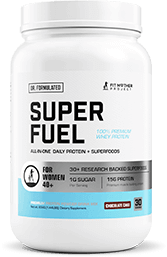
![]()
Meet SuperFuel. The Delicious Protein Shake Packed With 40+ Energy-Boosting Vitamins & Superfoods (Designed For Busy Women)

Replace Sweetened Protein Supplements
If you love protein bars or ready-to-drink protein shakes but want to follow a low-sugar diet, find healthy protein-rich products that contain 3 grams (or less) of added sugar per serving.
Look at the added sugar content on food labels when choosing low-sugar protein bars or shakes.
You can replace sugar-sweetened protein supplements with reduced-sugar (high-protein) chocolate milk, Greek yogurt, plain kefir, cottage cheese, nuts, seeds, or hummus.
Increase Your Intake of Natural Sugars
Whole foods containing natural sugar are the best choice when you desire a quick boost of energy.
Foods and drinks containing natural sugar include unflavored milk, unsweetened plant milk, 100% fruit juice, fruit, vegetables, and some whole grains.
Eating a variety of these foods and their natural sugars can boost satiety, keep energy levels high, and reduce cravings for sweets and other sugar-sweetened junk foods.
Heart RX is for women who are taking (or have taken) medication for lowering cholesterol and blood pressure. Heart RX will provide you with the natural support to improve all aspects of your heart health – including: blood pressure, healthy cholesterol, and better circulation.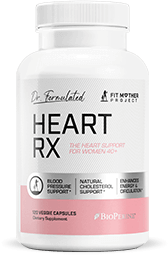
![]()
Meet Heart RX. The Blood Pressure, Cholesterol, and Healthy Circulation Support
For Women 40+

Increase Protein, Fiber, and Heart-Healthy Fats
Boosting your intake of protein foods, fiber-rich foods, and heart-healthy fats is a good way to reduce cravings for sugar-sweetened foods and drinks.
Focus on the following nutritious options when planning meals and menus:
Protein-rich foods: organic lean meats, chicken, turkey, duck, fish, seafood, eggs, milk, Greek yogurt, cottage cheese, reduced-fat cheese, tofu, seitan, peas, beans, lentils, other legumes, veggie burgers, nuts, seeds, and nut butters
Fiber-rich foods: fruits, vegetables, beans, peas, other types of legumes, nuts, seeds, and whole grains
Heart-healthy fats: avocados, olive oil, walnut oil, canola oil, coconut oil, other plant oils, nuts, seeds, nut butters, fish oil, and fatty fish (salmon, tuna, etc.)
Portion Your Plate Properly
Portioning your plate properly is a good way to feel full from fewer calories, get the essential nutrients your body needs, and diminish cravings for high-sugar foods.
Fill your plate the following way at mealtime:
- 1/2 full of non-starchy vegetables: spinach, kale, lettuce, other leafy greens, green beans, broccoli, cauliflower, celery, tomatoes, cucumbers, asparagus, zucchini, bell peppers, mushrooms, onions, carrots, etc.
- 1/4 plate full of protein foods: organic lean meats, chicken, turkey, duck, fish, shrimp, crab, other types of seafood, eggs, tofu, seitan, or other plant-based meat substitutes
- 1/4 plate full of fiber-rich starches: sweet potatoes, corn, peas, black beans, pinto beans, lentils, other types of legumes, or whole grains
- Add in healthy fats: avocados, olive oil, other plant oils, nuts, seeds, or nut butters
- Add three servings daily of milk, plant milk, cottage cheese, Greek yogurt, plain kefir, cheese, or other dairy foods
Avoid Buying Highly Processed Foods
Highly processed foods, including many prepackaged foods, often contain added sugar and other additives that aren't so healthy for you.
Choose fresh, whole foods (fresh fruits, vegetables, organic lean meats, etc.) over boxed and microwavable dinners.
If you choose packaged foods, always check the nutrition facts label.
Note the added sugar and sodium content before you purchase the food in question.
Avoid keeping highly processed foods in the house, making it easier to steer clear of added sugar!
Read Food Labels Carefully
Reading food labels is the best way to know how much added sugar you're consuming each day.
Under the carbohydrates section of each food label, look at the total sugar content.
Pay special attention to the number of grams of added sugar.
Choose foods with zero or very few grams of added sugar per serving to follow a low-sugar diet.
As women age, our immune systems get weaker. It’s a fact. After 40, you become more vulnerable to viruses, cancers, and even Alzheimer’s disease. Average women just let this all happen. But now, with Immune Booster RX, you can take the power back.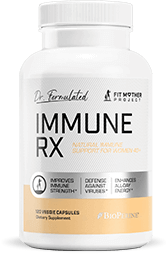
![]()
The Immune Booster Women 40+ Are Using To Kill Viruses & Feel Younger…

Choose Healthy Alternatives for Added Sugar
Healthy alternatives for sweet treats, which can help curb a sweet tooth, contain natural sugars vs. added sugars.
Examples of added sugar alternatives include fresh fruit, dried fruit, 100% fruit juice, and water mixed with 100% fruit juice or fruit.
Consider making a protein shake containing protein powder, almond milk, and your favorite fruits or nuts.
Blend the mixture together in a blender with ice and enjoy!
Try plain Greek yogurt or cottage cheese topped with fresh or dried fruit, or blend together plain kefir with fresh fruit.
Reduce Added Sugar a Little at a Time
You don't have to eliminate added sugar all at once and go “cold turkey.”
Begin a low-sugar diet by eliminating one or two high-sugar foods you normally consume, such as a can of soda, ice cream, or a candy bar.
Over time, eliminate and replace more and more foods and drinks containing added sugar until you reach your daily low-sugar diet goal (24 grams of added sugar or less).
Join a Healthy Living Program for Women
If adopting a low-sugar diet is your goal and you'd like guidance and motivational support from medical experts and other fit moms, consider signing up for the Fit Mother Project!
When you join this healthy living program for busy moms you receive custom meal plans, fat-burning workouts, low-sugar recipes, online health coaching support, weekly newsletters, and much more!
Try the free Fit Mom Jumpstart to get started on your journey toward a low-sugar diet and healthier life today!
Erin Coleman is a registered and licensed dietitian with over 15 years of freelance writing experience. She graduated with her Bachelor of Science degree in nutritional science from the University of Wisconsin-Madison, and completed her dietetic internship at Viterbo University in La Crosse, Wisconsin. Prior to beginning her career in medical content writing, Erin worked as Health Educator for the University of Wisconsin-Madison Department of Internal Medicine. Her published work appears on hundreds of health and fitness websites, and she’s currently working on publishing her first book! Erin is a wife, and a Mom to two beautiful children.
Fit Mother Project is the answer you’ve been looking for. Inside the program, you’ll receive: Our Fit Mother 30X Program (FM30X) is the answer you’ve been looking for. Inside FM30X, you’ll receive:If you’re a busy mom who wants to finally lose weight,
get healthy, and actually keep the pounds off for good,
this is the simple program you’ll love sticking to…
GET STARTED TODAY FOR FREE
If you’re a busy mom who wants to finally lose weight,
get healthy, and actually keep the pounds off for good,
this is the simple program you’ll love sticking to…
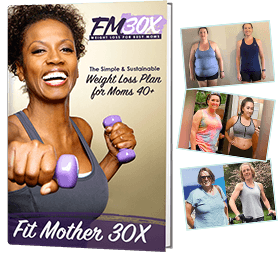
Learn More About FM30X

*Please know that weight loss results & health changes/improvements vary from individual to individual; you may not achieve similar results. Always consult with your doctor before making health decisions. This is not medical advice – simply very well-researched info on low sugar diets

